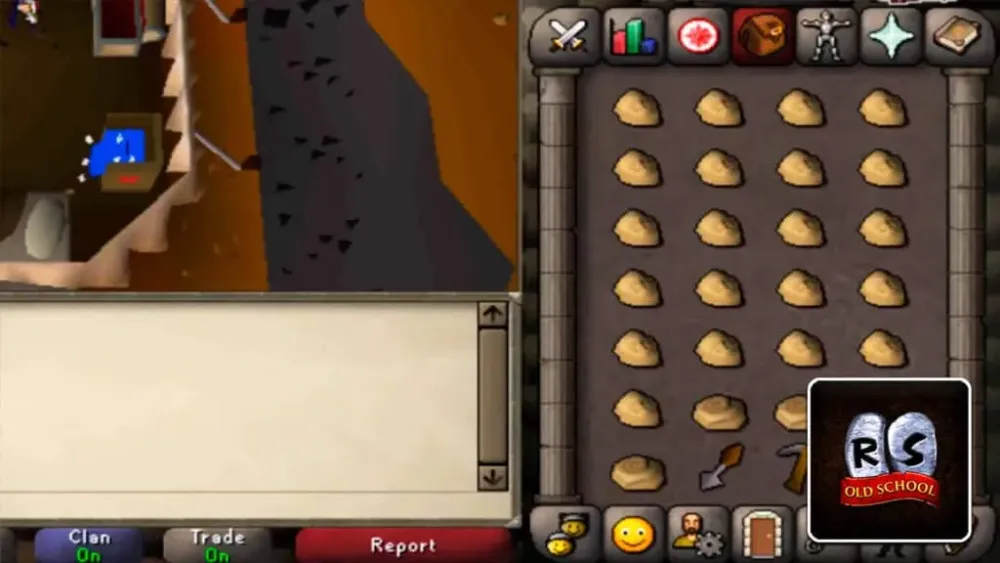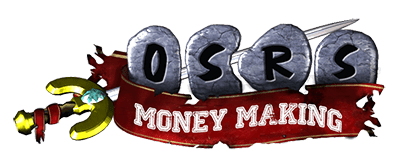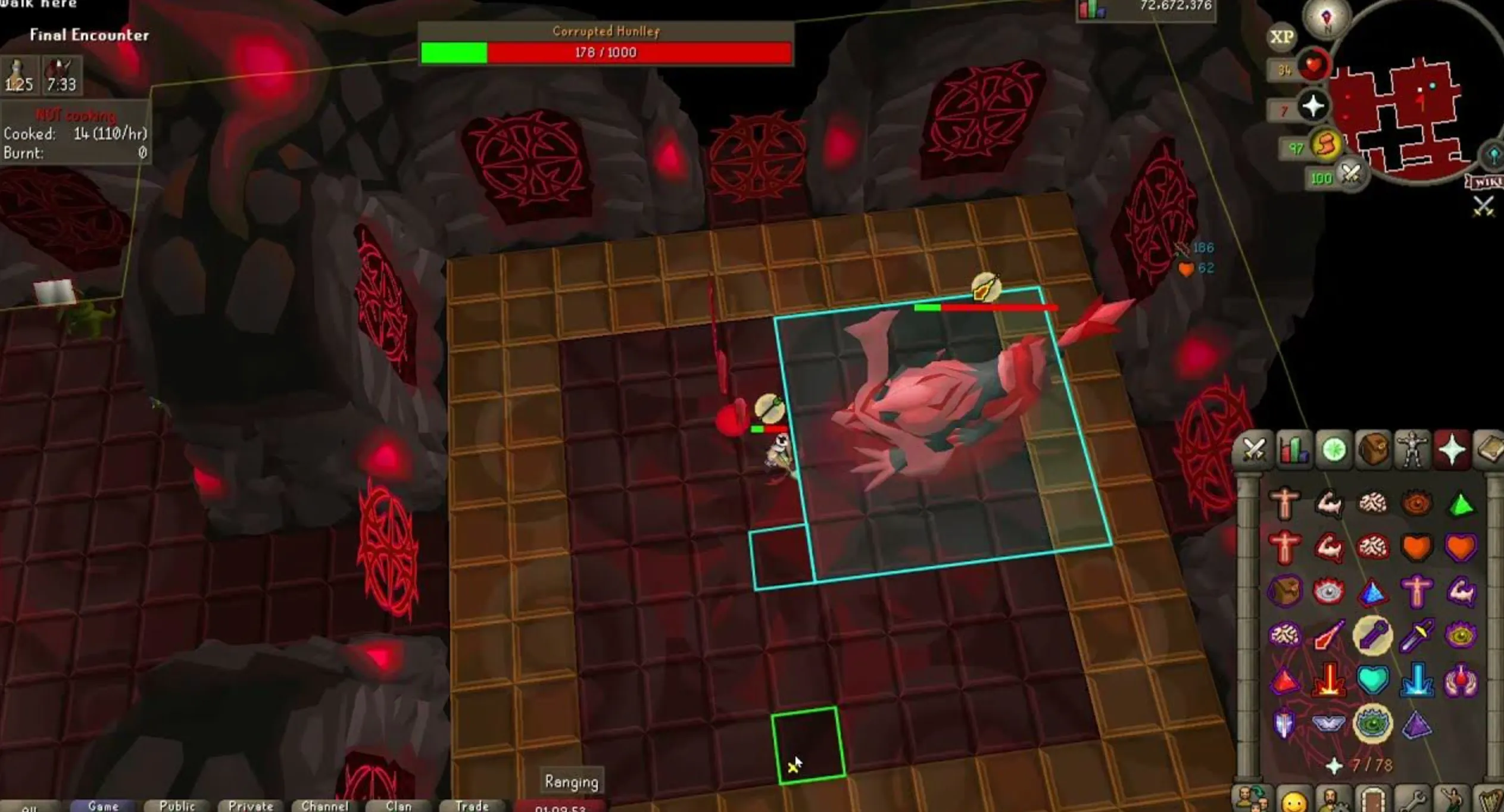Your cart is empty
OSRS Completing Fossil Exhibits Ultimate Guide

Completing fossil exhibits in Old School RuneScape (OSRS) is a rewarding endeavor for players looking to earn Kudos, experience lamps, and unlock unique rewards at the Varrock Museum. Fossils, gathered from Fossil Island, are key to building displays that showcase the island’s ancient history. This guide dives into everything you need to know about collecting fossils, cleaning them, and completing the exhibits, optimized for players of all levels.
Fossil exhibits are located on the bottom floor of the Varrock Museum, below the natural history section. These displays require specific sets of cleaned fossils from Fossil Island, which players collect through various activities. Completing each display grants 2 Kudos and an experience lamp, contributing to a total of 72 Kudos and 120,000 experience across all exhibits.
What Are Fossils?
Fossils are untradable items obtained on Fossil Island through skilling, combat, or other activities. They come in four types: small, medium, large, and plant, with large fossils splitting into either large or plant upon cleaning. Each display requires five cleaned fossils of the same type.
Why Complete Fossil Exhibits?
Completing fossil exhibits offers several benefits:
- Kudos: Earn 72 Kudos, unlocking access to the Workman’s Gate (153 Kudos total required) for the Hard Varrock Diary.
- Experience Lamps: Gain 2,000, 3,500, or 5,000 experience per lamp, totaling 120,000 experience.
- Lore and Achievement: Contribute to the museum’s paleontology floor and achieve a unique milestone.
Getting Started with Fossil Island

Before collecting fossils, you must unlock Fossil Island by completing the Bone Voyage quest, which requires 100 Kudos and completion of The Dig Site quest. Fossil Island is a members-only area rich with activities that yield fossils.
Accessing Fossil Island
After completing Bone Voyage, travel to Fossil Island via the barge at the Digsite. Ensure you have the following:
- 100 Kudos (from cleaning finds, Natural History Quiz, or quest turn-ins).
- Access to Great Kourend (sailed there at least once).
- Basic equipment for skilling or combat activities.
Free Fossils from Pete
Upon completing the Museum Camp on Fossil Island, speak to Pete, who’s panning nearby, to receive a free set of fossils. This set is enough to build one display, giving you a head start. Only 20% of players claim this reward, so don’t miss out! Tip: Build the entire camp to unlock this bonus.
Collecting Fossils on Fossil Island
Fossils are obtained through various activities on Fossil Island, each offering different drop rates. Below are the most efficient methods to gather fossils, tailored to different playstyles.
Skilling Activities
Skilling is a reliable way to collect fossils passively. Here are the best activities:
- Herbiboar Hunting: Requires 80 Hunter and 31 Herblore. Yields small, medium, and large fossils at varying rates. Expect 1-2 fossils per hour with high Hunter levels.
- Underwater Agility/Thieving: Requires 82 Agility and Thieving. Provides small and medium fossils while training both skills.
- Hardwood Farming: Growing teak or mahogany trees (35/55 Farming) occasionally drops fossils.
- Volcanic Mine: Mining in the Volcanic Mine (50 Mining) offers a chance at fossils, especially for Ironmen.
Combat Activities
For combat-focused players, killing monsters on Fossil Island is effective:
- Ancient Wyverns:-strong> Requires 82 Slayer. Drops large fossils frequently, ideal for completing large and plant displays.
- Fossil Wyverns: Requires 66 Slayer. Drops small and medium fossils at a moderate rate.
- Ammonite Crabs: No requirements. Drops small fossils, perfect for low-level players.
Fossil Drop Rates
Drop rates vary by activity and fossil type. Here’s a rough estimate based on community data:
| Activity | Small Fossils | Medium Fossils | Large Fossils |
|---|---|---|---|
| Herbiboar | High | Moderate | Low |
| Ancient Wyverns | Low | Moderate | High |
| Underwater Training | Moderate | Moderate | None |
| Ammonite Crabs | Moderate | None | None |
Note: Unidentified large fossils have a 50% chance of becoming either large or plant fossils when cleaned, requiring approximately 55 large fossils to get 25 of each type.
Cleaning and Storing Fossils
Once collected, fossils must be cleaned and stored before they can be used in exhibits. This process is straightforward but requires attention to detail.
Cleaning Fossils
Clean unidentified fossils at the fossil cleaning bench east of the Museum Camp or the specimen tables in the Varrock Museum. You’ll need:
- A trowel, rock pick, and specimen brush.
- Leather boots and gloves equipped.
Each fossil cleaned grants a small amount of Crafting or Construction experience, scaling with your level. Be cautious, as unidentified large fossils randomly become either large or plant fossils.
Storing Fossils
Fossils can be stored in synchronized storage crates across Fossil Island and the Varrock Museum. This eliminates the need for multiple bank trips. Pro Tip: Clean fossils on Fossil Island, store them in a crate, and retrieve them at the Varrock Museum for efficient display building.
Toggling Fossil Drops
If you no longer want to receive regular fossils (to avoid inventory clutter), speak to Peter in the southwest part of the Fossil Island camp to toggle them off. You can still opt to receive rare fossils.
Building Fossil Exhibits
With cleaned fossils in hand, it’s time to build the exhibits. The Varrock Museum has 36 displays, each requiring five fossils of the same type. Here’s the breakdown:
Fossil Requirements
To complete all exhibits, you need:
- 70 Small Fossils: For 14 small displays (animal parts like limbs, spine, ribs, pelvis, skull).
- 60 Medium Fossils: For 12 medium displays (similar animal parts).
- 25 Large Fossils: For 5 large displays (Leviathan parts).
- 25 Plant Fossils: For 5 plant displays (roots, stump, branch, leaf, mushroom).
Total: 180 fossils, with approximately 55 unidentified large fossils needed due to the 50/50 split.
Completing Displays
To build a display:
- Retrieve cleaned fossils from a storage crate at the Varrock Museum.
- Use five fossils of the same type on the corresponding display (e.g., small fossils on a small display).
- Receive 2 Kudos and an experience lamp (2,000 for small, 3,500 for medium, 5,000 for large/plant).
Tip: Prioritize large fossils, as they’re the rate-limiting step. Use Mairin’s Market to purchase specific fossils if you’re short on a type.
Alternative Uses for Fossils
If you have excess fossils, consider these options:
- Fossil Collector: Trade fossils for numulites (100-500 per fossil, depending on type).
- Mycelium Pool: Enrich fossils with calcite and pyrophosphite to create enriched bones for Prayer experience.
- Ancient Wyvern Shield: Recharge the shield with fossils for faster charging compared to numulites.
Tips for Efficient Fossil Exhibit Completion
Maximize your efficiency with these strategies:
- Focus on Large Fossils: Activities like killing Ancient Wyverns or Herbiboar hunting yield large fossils, which are the bottleneck.
- Use Storage Crates: Avoid banking by utilizing synchronized crates for fossil management.
- Combine Activities: Train skills like Hunter or Slayer while collecting fossils to save time.
- Check Mairin’s Market: If you’re missing a few fossils, buy them with points to avoid grinding.
- Track Progress: Use the Fossil Island note book to monitor your activities and ensure you’re collecting efficiently.
Completing fossil exhibits in OSRS is a grind, but the rewards—Kudos, experience, and a sense of accomplishment—make it worthwhile. Whether you’re a skiller, combat enthusiast, or lore lover, Fossil Island’s fossil system offers something for everyone. Start your journey today and fill the Varrock Museum with prehistoric wonders!

